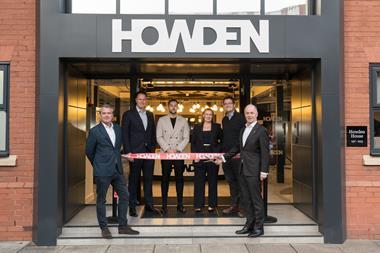The influx of capacity and low claims pay-outs have made aviation a highly competitive sector. But new types of aircraft could change all that. Verity Adams reports
Competition in the aviation sector has never been so fierce, even though this year sadly began with the crash on New Year's Day of Indonesia's Adam Air internal flight between Java and Sulawesi.
New capacity has come into the market based on the proliferation of low cost carriers and start-up domestic airlines in developing countries such as Indonesia, Malaysia and China which has led to a sharp drop in premiums.
Overall premiums fell by an average of 23% last month, the busiest month for renewals in aviation, and were on track to be the third month in a row that premiums have fallen, according to Aon.
The reductions, Aon said, were driven by the increase in capacity that had been introduced over the past year, and a good industry loss record. It added that capacity is expected to remain very high unless there is underwriter consolidation.
According to London based consultancy Ascend, last year was the joint second safest ever for the aviation industry. It said there were 13 fatal accidents in 2006, compared with 11 in 2004 - the safest year to date. The annual average is 20.
The number of passenger deaths in 2006 was 790, compared with 347 in 2004.
An Aon aviation spokesman said: "That's why new capacity has come about. What we have now is a lot of organisations chasing business. It makes for a competitive market."
But a major incident is always going to change the market. "We are moving towards a situation where the market is somewhere near the bottom and should start turning up, but it seems we're not there yet. It's difficult to see if it can carry on
delivering the reductions we have seen over the last quarter. Were there to be a major loss, the capacity could reduce quickly."
But the aviation market is growing in all directions and with it creating new risks. The new five-seater Very Light Jet (VLJ) is within reach of high-flying high net worth individuals willing to part with anything from £800,000, and thousands of orders have already placed with manufacturers.
The 500 Jet by Eclipse Aviation was the first VLJ to win approval from the US Federation of Aviation Administration (FAA) and the industry is preparing itself for the potential risks. But despite every effort to make the 500 Jet one of the safest aircrafts around for its price tag, the worry is that it will attract unskilled pilots, and higher premiums with it.
Chris Hancock, chief underwriting officer at CV Starr, says VLJ's are very well manufactured and been licenced by all the relevant authorities, so the aircraft will be safe to fly. But the issue the underwriters have is with the type of pilots that will be flying them.
"The level of experience is a factor and whether there will be one pilot or two. VLJ pilots are lower down the food chain than airline pilots in terms of level of experience," he says.
He adds that VLJ pilots in comparison to airline pilots are like learner drivers, and you would expect the cost of insurance to be higher.
But light crafts are just one in a long line of new entrants to the aviation market, presenting varying levels of risk. Brokers will soon be looking to place business for Airbus, Boeing's arch-rival. The A380, the world's largest airliner, has faced a number of delays that could prove costly as loss of orders may result in compensation claims. For underwriters, the greatest risk is the catastrophe risk, according to Hancock.
He says: "The A380 seats in excess of around 555 passengers and if it crashes the severity of loss is greater than for example a Boeing 747, where around 100 less people could be killed."
He added that the size of the risk for insuring the A380 compared to a 747 would be like setting a tower block against a condominium in Florida.
One senior broking source says: "A brand new product will be safer than what the industry will have seen 20 years ago. There may have been weight problems with the Airbus, but it's fundamentally going to be a safer aircraft. Its liability limit is likely to be around $2bn."
Other new and "attractive business" has included the new no-frills start-ups which have been emerging onto the market since deregulation in 1999. Hancock says airlines such as Air Asia, Easyjet and Ryan Air are regarded as attractive pieces of business. They fly more frequently than long haul airlines and although they are low-cost they are not seen as low safety when assessing the level of risk.
But aviation, insurance and high risks are always going to be interlinked.
This year has already seen one crash that killed nearly 100 people in Indonesia on New Year's Day. Marsh is understood to be at the centre of the insurance claim, which is thought to have placed business for the airline, Adam Air. It is also understood to have placed cover for the aircraft's manufacturers, Boeing, and its engine manufacturer, General Electric.
But according to one senior broking source it will take something much bigger than the size of the Adam Air crash to shift the market.
Hancock, who joined CV Starr from Faraday, agreed that a number of European crashes would have more of an immediate affect than if the losses were in developing countries as the value of life is higher in Europe and the compensation pay-out is greater. IT





































